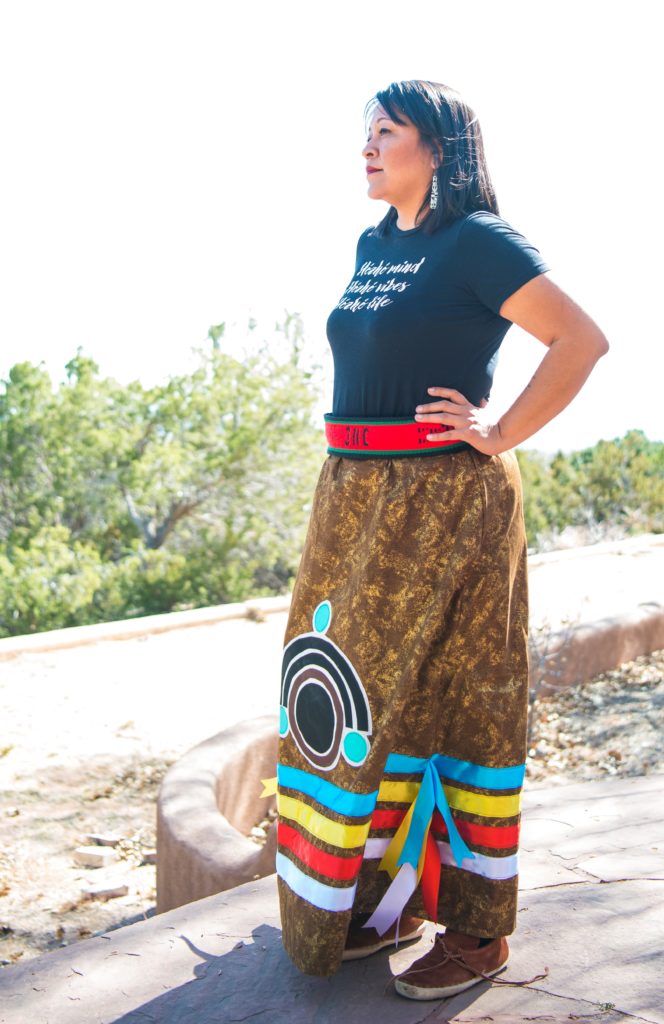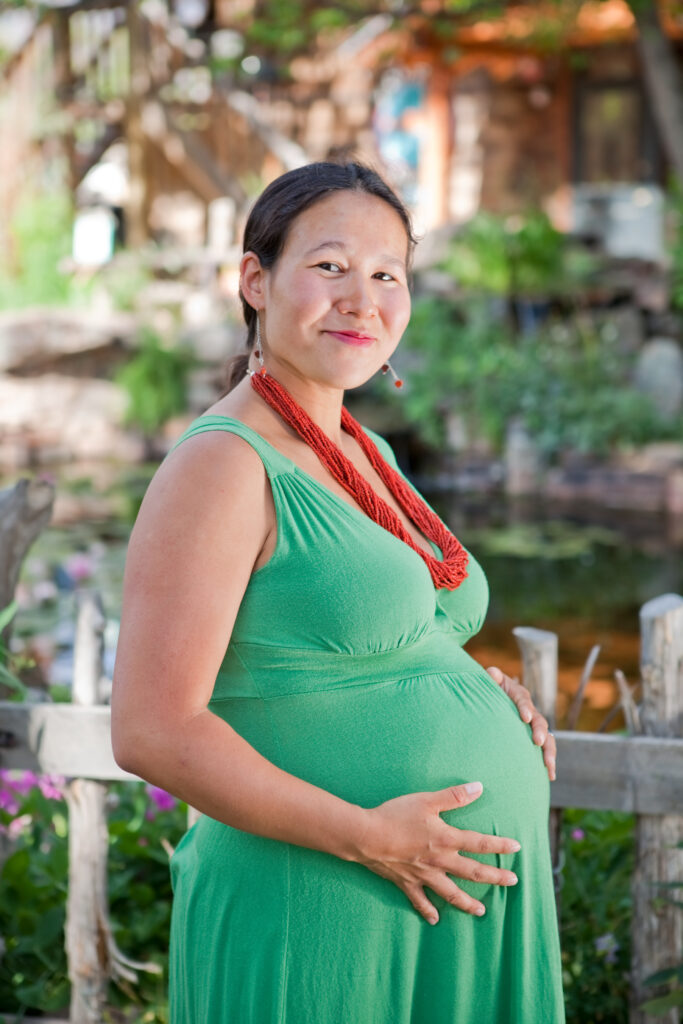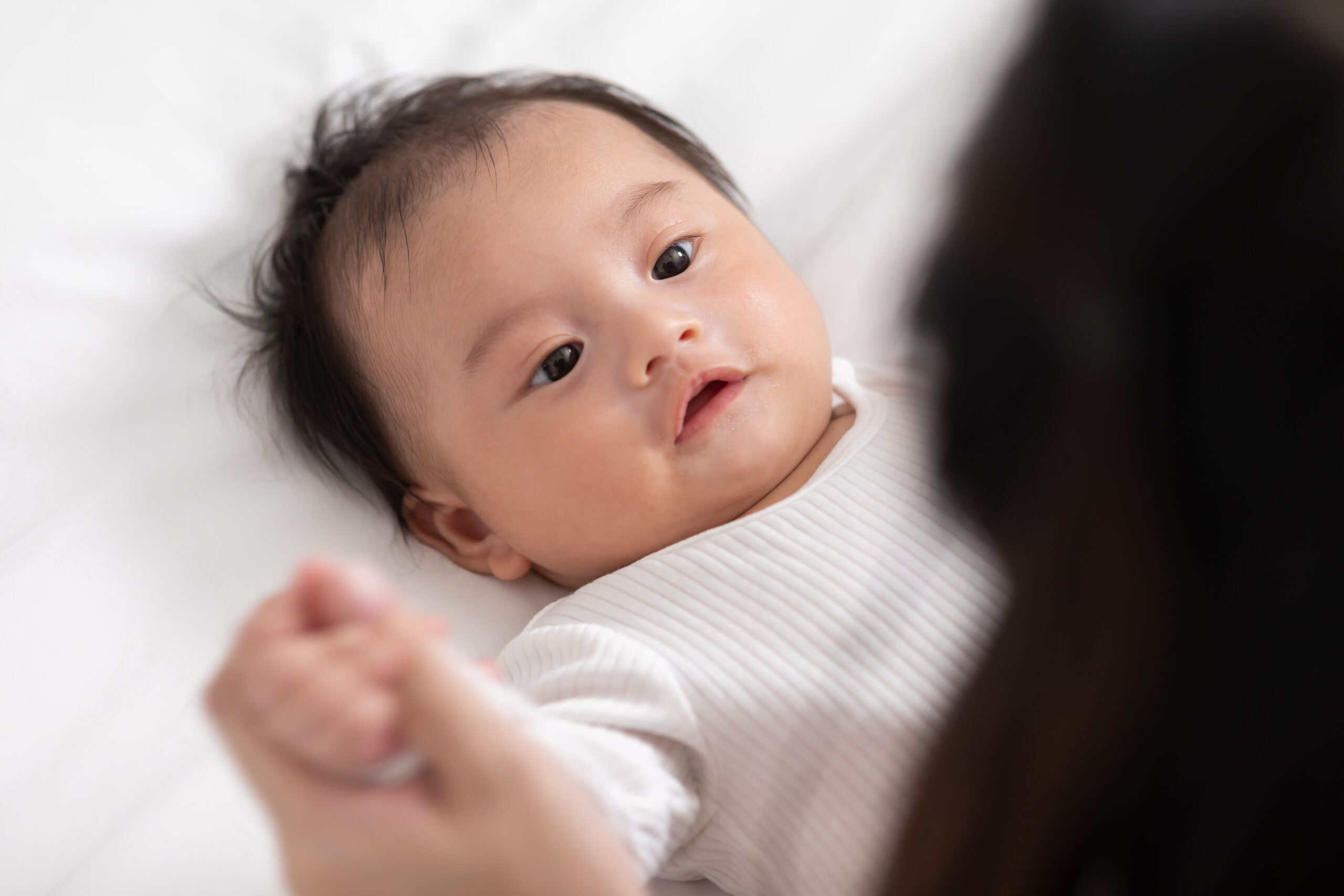Racism in reproductive healthcare impacts prenatal care and maternal mortality rates for many Native American women. Now Indigenous midwifery is blending modern care with traditional knowledge and birthing practices.
Pregnancy and birth can be the most vulnerable time of a woman’s life. But for Indigenous women, mistreatment and hostility from healthcare workers can impact their maternity care – or dissuade them from seeking care from health systems that marginalize Native women. In fact, 15% of Indigenous women avoid services altogether for fear of mistreatment.
A number of systemic factors impact Native American maternal health. Racial discrimination is a big one and so is mistrust. Indigenous women have experienced many brutal violations at the hands of the medical industry, such as being sterilized without consent. Other barriers include high rates of poverty, hazardous living conditions, and food insecurity. Provider shortages at Tribal and Indian Health Service (IHS) facilities can make it tough to establish consistent, positive relationships with doctors.
“When you read statistics about low birth weight or mortality, and high rates of diabetes and hypertension, the blame is placed on Native women,” said Nicolle Gonzales, BSN, RN, MSN, CNM. Gonzales, who is Navajo, is the founder of Changing Woman Initiative and an Indigenous midwife of 10 years. “But when I looked into these issues, it’s much bigger than that. Insurance challenges or lack of transportation are barriers. Native women have to navigate multiple healthcare systems in one community to have their baby. And non-Native hospitals and birth centers may not honor traditions around birth and pregnancy, so the women don’t feel seen or heard.https://tribalhealth.com/healthcare-data/”
The collective result of these factors: expectant Native mothers are more likely to receive late or no prenatal care than white mothers.

Barriers to Prenatal Care
The United States may be one of the wealthiest nations on Earth, but it also has some of the highest rates of maternal mortality in the developed world. Native American pregnant women are particularly impacted:
- They are three to four times more likely than white women to die of complications related to pregnancy and/or childbirth – and they have a preterm labor rate and an obstetrical hemorrhage rate that is more than twice that of white women.
- 21 percent of Native women of reproductive age are uninsured, compared to eight percent of white women – which can lead to skipping prenatal care, and increased risk of low birth weight. 41 percent say cost factors stop them from receiving the recommended number of prenatal visits.
- They are 1.4 times more likely than white women to be diagnosed with gestational hypertension and pre-eclampsia – and 1.5-2 times more likely to be diagnosed with gestational diabetes.
These factors inspired Gonzales to turn to Indigenous midwifery and ancestral birth practices. Indigenous midwifery rebuilds and preserves sacred birthing rituals that have been lost to cultural genocide, blending them with modern prenatal and birth care. The more Gonzales learned about it, the more she realized she could help Native American women have the birth experience they wanted.
“I was inspired by some of the stories I heard, some of the women I took care of in IHS Santa Fe – and I saw in midwifery a way to advocate for families that I couldn’t as a nurse,” she said.

Culturally Insensitive Maternity Care
Some of the stories Gonzales heard include upsetting treatment. “Women reported not feeling empowered in their birth experience, staff dismissing requests for pain medicine, hospitals ignoring their plans and needs – as well as overall harm done to Native women without their consent or knowledge.”
Many women have reported infant separation policies that take their newborns from them at birth without consent. During the pandemic, one Albuquerque hospital enforced a secret policy of testing all Native American women for COVID-19 and separating them from their infants until their results were available. Some women are rushed out of hospital rooms while still in postpartum recovery. Women who want to bury the placenta in the traditional Diné way may find the hospital staff tossed it out as biowaste. Still others find their families are treated with disrespect by white staff.
“Native American women may not know their rights or what to ask, where Anglo women are used to those hospitals and know what to ask,” Gonzales explained. “Women in the community will know something is off but accept that it’s the way things are. There aren’t always a lot of options.”
You might be thinking that Indigenous women can turn to Indian Health Service and Tribal healthcare facilities, right? Not always. IHS provides perinatal care at many of its 24 hospitals and 51 health centers but attending these may not be an option (or a first choice) for a pregnant woman. Her local facility may be understaffed and overcrowded; she may not live near an IHS facility or she may prefer to see an obstetrician from her current medical home. In 2020, dozens of Native mothers found themselves stranded when the Phoenix Indian Medical Center abruptly closed its obstetrics unit over staffing problems. Some patients were only a few weeks from their due date.
Any of these stressors can negatively impact maternal health, increasing cortisol levels and high blood pressure – making it crucial for pregnant women to have a calm and sensitive healthcare experience.

Reclaiming the Power of Indigenous Midwifery
Indigenous midwives combine modern, professional maternity care with ancestral Indigenous knowledge about pregnancy and childbirth. Gonzales pointed to forced boarding school education and the indoctrination of religious belief in severing many Tribal communities from traditional practices. “This severance from traditional pregnancy and birth knowledge wasn’t organic, it was intentional,” she said. “Native American women who were sent to the schools lost that knowledge and didn’t hear the stories told in their communities in wintertime.”
Some traditional birthways were still common by the mid-20th century, such as the Navajo red rope birth or “no sleep” songs sung during labor. However, the American Board of Obstetrics and Gynecology intensified pressure against midwifery – and soon many states declared it illegal. One 1942 law outlawed traditional Native America birth practices and required Indigenous women living on reservations to travel to hospitals for delivery. Even in more recent times, Gonzales said, “Women were told they could only be safe in the hospital. There’s a feeling of pressure to birth there and not outside of that space.”
To study Indigenous midwifery, Gonzales traveled from Guatemala to Canada. There she met midwives working out of an aboriginal birth center, which used traditional practices and herbs to support wellness during pregnancy. These midwives created Indigenous pregnancy toolkits and were active in legislation.
Her experiences were transformative. “It was pretty amazing to be in a room with over 30 indigenous or aboriginal midwives,” she said. “I said, ‘Wait, we can support women to have home births, but this knowledge isn’t shared openly, and people don’t know it’s possible.’”
Today, as the services of certified nurse-midwives have climbed in popularity, many US health activists are including them in bills intended to improve the maternal care crisis among women of color. Earlier this year, the Black Maternal Health Caucus reintroduced the Momnibus Act, which focuses on increasing access to perinatal care, diversifying the healthcare workforce, and other goals. That includes increasing the number of certified midwives who are practitioners of color.

Reinventing Indigenous Reproductive Care
Today, more healthcare professionals recognize how transformative ceremonial birthing practices can be for Native American women. Indigenous midwifery is new territory for many women’s health centers, but some are exploring ways to collaborate between facility providers and midwives. Still, trying to train and build a Native midwifery workforce holds challenges, such as the lack of payer coverage for ancestral midwifery care. Midwives who work with a patient throughout her pregnancy may find themselves sidelined by other providers if she gives birth at a non-Native facility.
For both Tribal and non-Native healthcare systems, Gonzales has advice on supporting Native American women seeking reproductive care.
- One tip: Stop rushing through appointments. Or as she put it, “You have to change the dynamics of time.” By slowing down and spending more time with expectant mothers, providers can create a friendlier rapport and do a better job of learning the patient’s cultural practices and expectations.
- Another is making structural changes, particularly in organizations that are highly regimented. “So many times, the infrastructure has to change before new clinical or educational programs can launch,” she said. “There are untapped opportunities to use buildings and resources in different ways, but these facilities have to think in a new way.”
- Finally, Gonzales would like to see a greater priority placed on maternal health in healthcare strategy discussions. “Whether it’s legislation or funding or creating new programs, maternal health needs to be pushed as a priority,” she said. “Even now in COVID conversations, community leaders talk about the elderly and children but not pregnant women. That conversation gets left out.”
Ultimately, the real key is expanding both the acceptance and the availability of Indigenous midwifery services.
“It’s not easy – options for traditional birth are limited,” Gonzales admits. “But I’ve been having this conversation for the last 10 years and it’s now getting more attention than it ever did. I talk to more and more women who want to bring back that traditional birth knowledge and have a midwife when they have their baby. And that’s a beautiful thing to see.”

